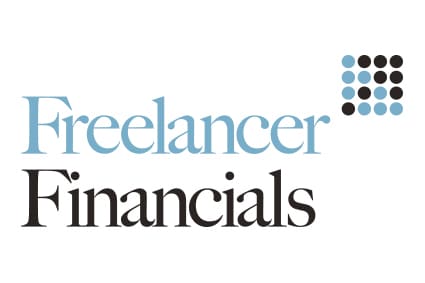OTS suggest Class 1 NIC reforms but are we any closer to full integration?
Building on its first report in March of this year, the Office of Tax Simplification (OTS) have this week published its second report, ‘Closer alignment of income tax and national insurance: a further review’ that reaffirms its view that NIC and Income Tax should be brought closer together to create a simpler and fairer system for business and taxpayers.
The OTS has been exploring the issue of tax and NIC alignment for some time now. Earlier this year it published its first report on the issues involved and recommended a seven step plan including that, from a simplification perspective, employees’ Income Tax and NIC should be calculated in the same way, and employers should pay a charge based on their overall payroll. It is these two recommendations that form the basis of this latest report.
Employee’s NIC
At present there are fundamental differences in the periods of assessment for Income Tax and an employee’s NIC which leads to two areas of complexity:
- the two regimes tax essentially the same employment income but in different ways; and
- depending on circumstances, can lead to different outcomes.
In their March report, the OTS suggested that an employee’s NIC should operate on an annual, cumulated and aggregated (ACA) basis of assessment in essentially the same way as Income Tax. This means that:
- all earnings across all employments in the year, however small, would be taken into account in calculating the employee’s annual liability to NIC
- earnings from previous earning periods in the same tax year in the same employment would be taken into account in calculating the employee’s primary NIC
Winners and losers
Moving to an ACA basis would impact many individuals. Some 5.5 million people would pay more NIC, typically those with more than one job and those earning in excess of £20,000 p.a. In contrast, 7.6 million people would pay less NIC, typically part-time employees, women, those under 35, and those in lower paid service industries. The annual average gain would be £169 and the average loss £242.
Cost of reform
A major issue is the administrative impacts of reform which is twofold. Firstly, there are the one-off costs of preparation and transition and, secondly, the continuing costs of running the new system. Costs have to be considered for both employers and HMRC.
At this stage the OTS cannot put a firm cost on these reforms but have concluded that:
- employers do not see that changing to ACA will create significant costs, as payroll software will deal with the changed calculations
- software changes would need a two year lead time
- employers suggest transitioning will represent a cost but less so than RTI
- the assumption is that ACA means that NIC will parallel PAYE Income Tax. As employers deal with PAYE changes and procedures already, calculating NIC in parallel rather than under separate routines must be easier
- there would be a significant exercise needed to inform taxpayers of the changes and implications
- HMRC would need to make major system changes which is estimated to cost in the low tens of millions of pounds
- although HMRC would have to perform many more end-of-year NIC reconciliations, this should not prove too burdensome if the process is automated.
HMRC has estimated that moving an employee’s NIC to ACA basis would be broadly revenue neutral.
ACA is a neat simplification in principle and an employee’s NIC would become more transparent, and easier for employees to understand. It also eliminates the bizarre situation where the pattern of payment determines the amount of tax paid and replacing it with one where total income, however it is paid, results in the same NIC liability, just as for Income Tax.
Employers’ NIC
Again, in their March report, the OTS argued that employers’ NIC should be replaced by a general payroll levy. They found much support for this idea given that employers’ NIC do not link to the individual employee’s NIC in terms of entitlement to benefits.
The OTS found that employers’ NIC distorts the labour market by providing an incentive to employers to employ individuals on a part-time basis with earnings within the secondary threshold.
A further argument for reform is that employers’ NIC are invisible to employees and not well understood in their amount or purpose.
The current charge is seen as a ‘tax on jobs’, with little understanding of the employer’s role in the social security regime. Features of a good employer tax, and indeed any tax, would include clear and understood aims, transparency, certainty and general ease of operation for all concerned.
According to the OTS, maintaining two systems of taxation of earned income is one of the drivers distorting business behaviour, in particular in relation to profit extraction from limited companies and hiring decisions around employment status. A good employer tax would not increase the motivation for incorporations purely for taxation reasons.
Eight options have been identified by the OTS with a ninth more radical possibility. All have the aim of remaining revenue neutral for the Exchequer, with the main options being:
- A simple flat rate payroll levy, with no employer’s secondary threshold, but in four different ways and incorporating different employment allowances (to be deducted from the NIC charge). The rates of levy range from 10% with no employment allowance to 10.4%, 11.8% and 13.8%, with the latter three coupled with differing levels of employment allowance.
- Replacing the employer’s secondary threshold with a cumulative annual employee allowance per employment.
- Link to a specified percentage of employee NIC.
- Retain the existing system.
- Replace the secondary threshold with a full-time equivalent employee allowance.
The OTS do not think that there is a clear winner in terms of these options, as there are varying benefits and challenges. However, they have ruled out a simple 10% levy with no allowances that they originally suggested in their March report.
Nothing in the further work that the OTS has carried out since March has altered their opinion that there is a need and an opportunity to reform the NIC system. It seems however that we are still a long way off that elusive holy grail of full integration of NIC and Income Tax.






This is scary. With dividends all but closed off, RTI meaning that all companies are doing some form of payroll, there would be no way to avoid the new Employers NI.
All the options listed mean paying this tax for anyone running a payroll system i.e. all Ltd Cos.
What they don’t seem to get is that this nebulous ’employer’s role in the social security regime’ is baloney. To turn their own rhetoric back on them, if a self-employed plumber under Schedule D doesn’t have any such responsibility then neither does a self-employed engineer/IT person who has a Ltd Co forced on them by other legislation aimed mainly at agency abuses.
The best idea these people had they have now shelved – to have a look-through Ltd Co that can operate Sch D.
BTW Where the useless PCG on this?
VI. Abolish employers’ NIC.
Just another so called consultation to keep people in a job then back everyone anyways for the benefit of HMRC.
It is very easy to be fair. To run consultation after consultation is just to satisfy perceptions.
If NIC perfectly parallels PAYE why not just scrap the whole of Employee’s NIC and add it to Income tax? Pretty simple to implement too. (EENic rate becomes zero, Tax rates+12%, all calcs remain the same). A real simplification!
..Because (for whatever reason) you only pay NICs in earned income. It’s this anomaly that creates the whole contracting/IR35 mess. But as we already have different tax rates for different earnings, there’s no additional complexity.
Aggregating Employee NICs could stop abuse by Starbucks etc – employing 2 part timers (zero ernic) vs one fulltime (some ernic).
IR35 would not be “solved” unless Dividends to major shareholders were somehow included in payroll costs.
Better yet, longer term scrap ALL this nonsense for a low gross flat tax on income, rather than these thousand and one different arcane rules guaranteed to do little more than keep accountants in business for centuries to come.
Also, NI has no purpose but to serve as another tax. The money is spent as soon as it is taken. It is just another form of PAYE with more obscure rules applied to it, not without the usual sanctimony from HMG about it, though.
“IR35 would not be “solved” unless Dividends to major shareholders were somehow included in payroll costs.”
You would have thought there isn’t this thing called a dividend tax, even assuming there should not be a differential between contractors and regular employees… although one could argue it is the latter who are over-taxed, more than anything else. This would, of course, require the government to rein in its uncontrolled spending.
BTW the notion that a contractor should pay the EXACT same tax as an employee, without any of the legal perks/protections, is insane. So irrespective of whether the dividend closes the “gap” 100%, from a revenue POV it should already be sufficient for hector to close their measly, unsubstantiated “protected” £400m or so, which they can never quite prove.
BTW the notion that a contractor should pay the EXACT same tax as an employee, without any of the legal perks/protections, is insane. So irrespective of whether the dividend closes the “gap” 100%, from a revenue POV it should already be sufficient for hector to close their measly, unsubstantiated “protected” £400m or so, which they can never quite prove.